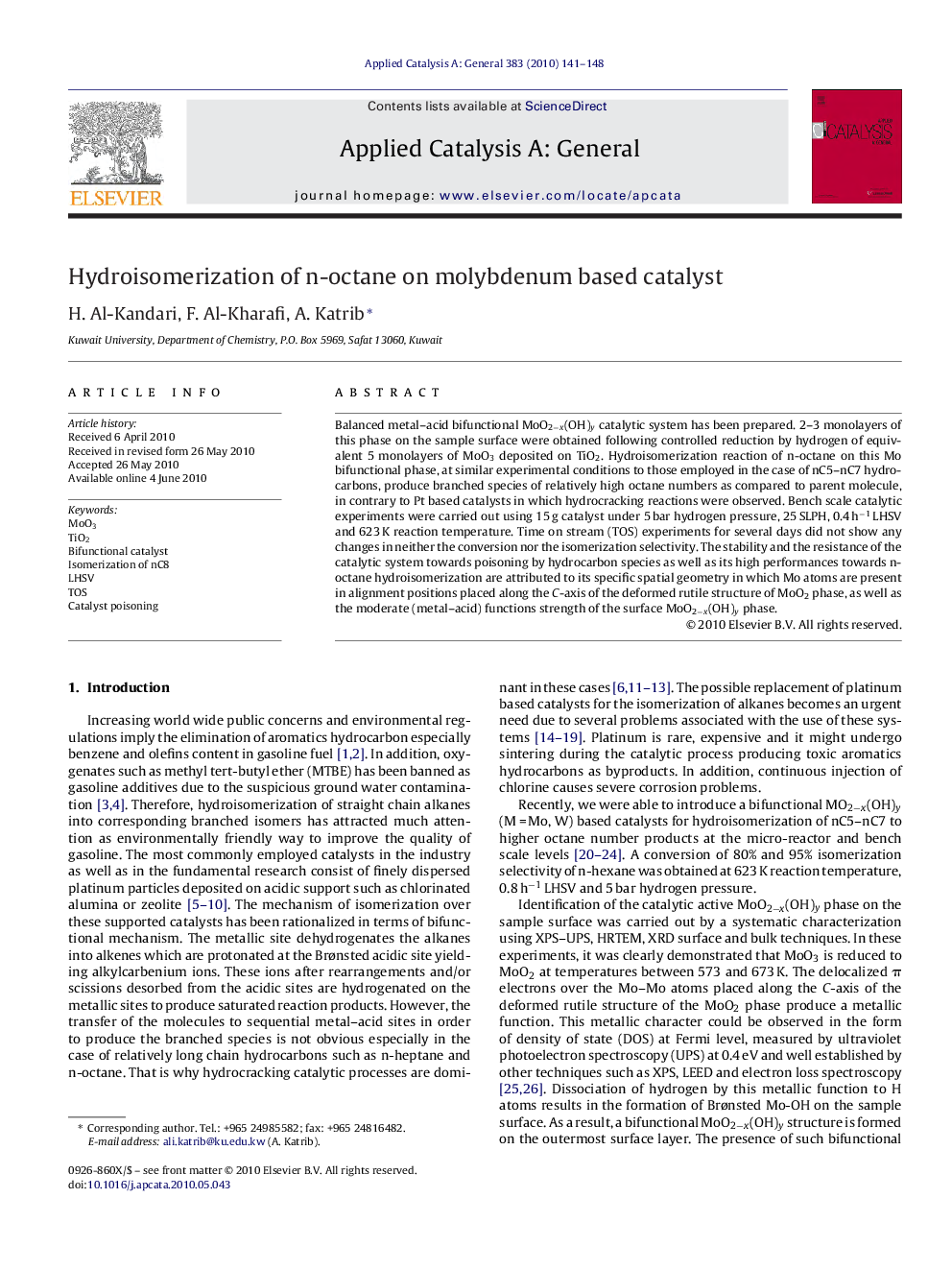| Article ID | Journal | Published Year | Pages | File Type |
|---|---|---|---|---|
| 42008 | Applied Catalysis A: General | 2010 | 8 Pages |
Balanced metal–acid bifunctional MoO2−x(OH)y catalytic system has been prepared. 2–3 monolayers of this phase on the sample surface were obtained following controlled reduction by hydrogen of equivalent 5 monolayers of MoO3 deposited on TiO2. Hydroisomerization reaction of n-octane on this Mo bifunctional phase, at similar experimental conditions to those employed in the case of nC5–nC7 hydrocarbons, produce branched species of relatively high octane numbers as compared to parent molecule, in contrary to Pt based catalysts in which hydrocracking reactions were observed. Bench scale catalytic experiments were carried out using 15 g catalyst under 5 bar hydrogen pressure, 25 SLPH, 0.4 h−1 LHSV and 623 K reaction temperature. Time on stream (TOS) experiments for several days did not show any changes in neither the conversion nor the isomerization selectivity. The stability and the resistance of the catalytic system towards poisoning by hydrocarbon species as well as its high performances towards n-octane hydroisomerization are attributed to its specific spatial geometry in which Mo atoms are present in alignment positions placed along the C-axis of the deformed rutile structure of MoO2 phase, as well as the moderate (metal–acid) functions strength of the surface MoO2−x(OH)y phase.
Graphical abstractFigure optionsDownload full-size imageDownload high-quality image (17 K)Download as PowerPoint slideResearch highlights▶ Preparation and characterization of a bifunctional Mo based catalyst. ▶ Identification of the oxidation state of Mo and the presence of metallic and acidic functions by XPS-UPS techniques. ▶ Hydroisomerization of n-octane on this bifunctional Mo catalyst.
